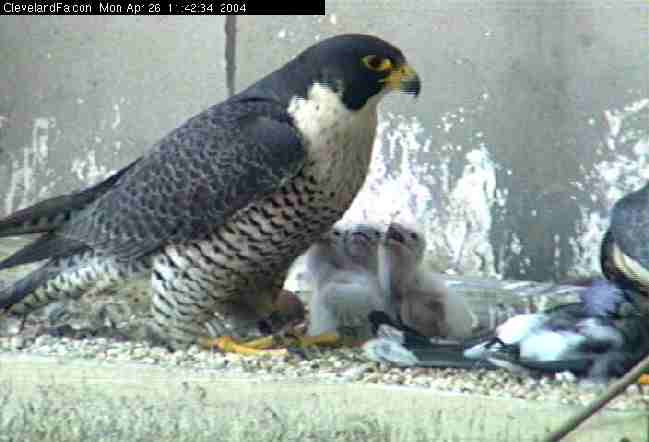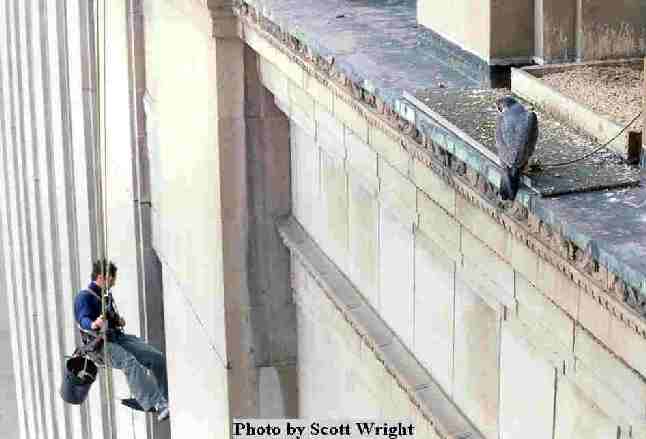Question for the kids: Most research shows that Peregrine Falcons need 8-10 miles of space around their nest box, for their territory. Can anyone explain why 'city' falcons only need a few city-blocks worth of territory?"
To watch the falcons live go to:
http://www.falconcam.apk.net/ Our thanks to EcoCity Cleveland for providing the FalconCams as a public service. The first photo is a still captured from the FalconCam.
The photo of the falcons nesting in the wild is courtesy of the U.S. Fish and Wildlife Service. Visit their website for lots of information at:
http://endangered.fws.gov/ The photo of Buckeye and the window washer is courtesy of Scott Wright and may be used in any non-commercial publication, electronic or print, but please give him photo credit.


